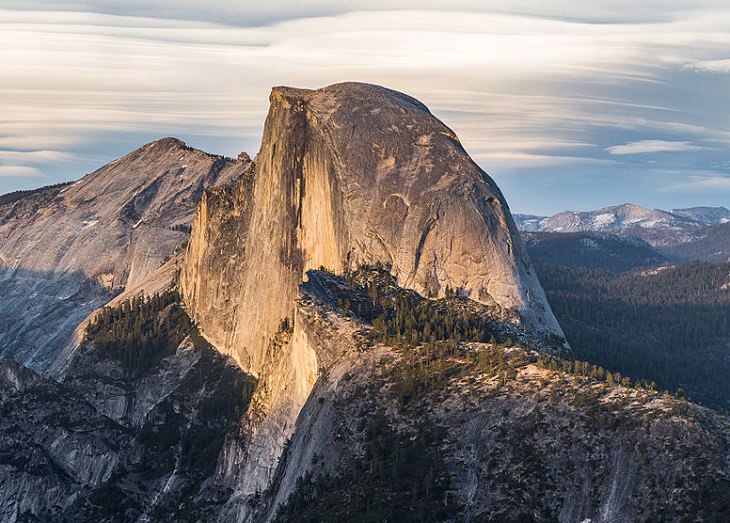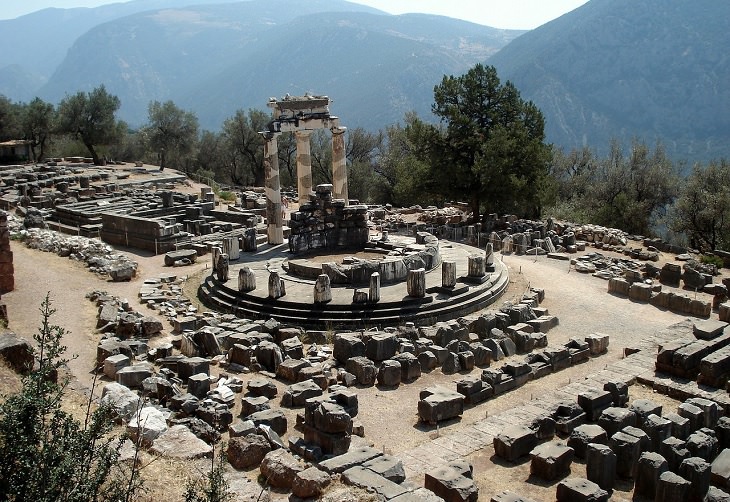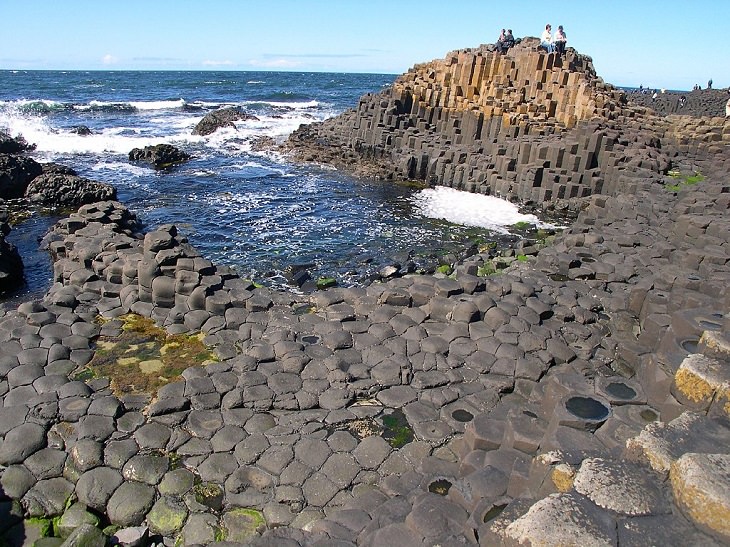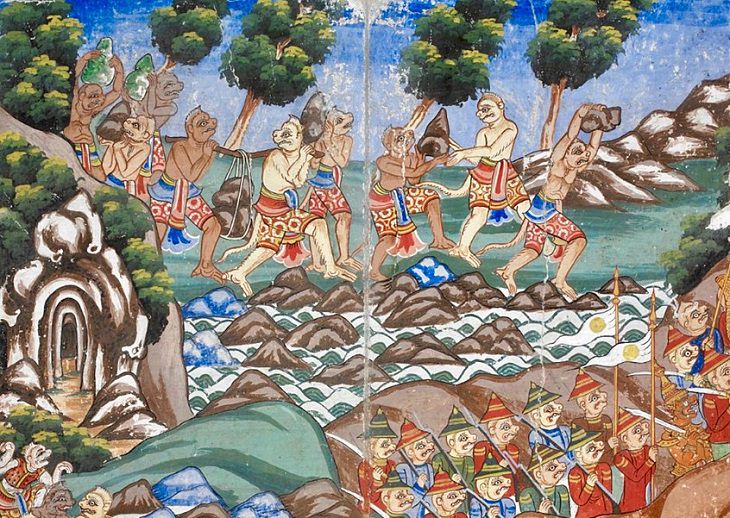
History and civilization are filled with a swirl of reality, fairy tale, and fiction designed to entice and inspire us. There is so much to our grand, strange planet shrouded in the unexplainable, which leaves us seeking explanations of a greater purpose. For example, the tale of Noah's Ark tells us of a man that saved the last of every species from a global flood. While there were no global floods at the time the story originated, there were numerous strong floods and tsunamis that submerged large portions of land unexpectedly and changed our planet's geological structure, leaving many fragments of truth in this legend. The same can be said for the stories of Atlantis, as well as many other notable locations and geological events.
Like volcanoes birthed from the wrath of a goddess or the love of an emperor, our lives are enriched by fantastical stories, providing us comfort in the face of the incomprehensible. There are no better examples of the loveliness we can add to our strange world than these enticingly interesting folk tales, brought to life by strange geological and geographical happenstance. Though many of the stories have been proven to be nothing more than myths in this age of science, the beauty of magic and mystics is that one can never really know for sure, can they? Decide what to believe for yourself!

(By Diliff, Wikimedia Commons)
The Half Dome is one of the most famous rock structures in Yosemite National Park, California. Its unique shape and size make it the ideal challenge for avid hikers and rock climbers, along with its close proximity to other notable rock formations like the Washington Column. After years of wear and tear at the hands of some frigid winters, much of the Half Dome's original shape is gone. However, many claim that they can make out the silhouette of a face on one side of the dome. This is likely the face of Tis-sa-Ack.
According to this old tale, Tis-sa-Ack, a Native American woman and her husband were making their way through the valley now called Yosemite to reach another. Throughout their journey, Tis-sa-Ack carried their joint belongings, a heavy reed-and-grass basket, while her husband carried only his walking stick. Her husband made no attempts to help his wife with her load as tradition held it her duty to carry the burden.
As one would expect, the many hours of holding the heavy basket while walking under the scorching grip of sunlight left Tis-sa-Ack exhausted. As soon as they began to approach the mountain Lake, Tis-sa-Ack sprinted to reach it, taking the basket with her. In fact, her thirst was so great that by the time her husband reached the lake, the entire watering hole was completely dried up.
Almost instantaneously, the dried lake, wholly consumed by the exhausted Tis-sa-Ack, sent the rest of the land into a desert-like drought, causing all the green in the valley to wither and turn to dust. This angered the Great Spirit that resided in the valley. But Tis-sa-Ack first received the rage of her husband, who began to brandish his walking stick like a throwing spear.
Tis-sa-Ack began to weep as she fled from her husband.
At one point, she turned and flung the basket, which was still in her hands, at him so she could make her escape. However, as she turned to look at her husband, and released the basket from her grip, the Great Spirit struck, turning both her and her husband to stone. Tis-sa-Ack became the Half Dome, her tear-stained still visible, and her husband, the Washington Column

(Pixabay)
This name referred to an institution or temple built in Ancient Greece as a place of worship, dedication, and fealty to the God Apollo. The temple stood on the steep slopes of Mount Parnassus and was operated by a woman called the Pythia, the high priestess of Delphi. The priestess gave up her birth identity upon joining the temple and focused her life on fulfilling what she believed to be the god Apollo's will.
The Pythia gained famed throughout the kingdoms of Ancient Greece, with many kings, queens, and warriors approaching her to know the truth or the future. She gained notoriety for her oddly worded and ambiguous prophecies that more often than not led men to their doom. Nonetheless, she had many devout followers.
Legends speak of a secret chamber in the temple that was only accessed by the Pythia. At certain times, a sweet-smelling vapor would rise from cracks in the rocks that she claimed allowed her to channel Apollo's spirit. She would then burst into a frenzied state, breaking out into fits and murmuring in gibberish. Her words would be collected and then retold as prophecies, many of which were claimed to be fulfilled.
Both claims regarding the presence of a secret chamber and the gas were found to be valid years later by exploring geologists. Running underneath the temple site, now in ruins, were geological faults that likely created the underground chamber. The gas is believed to have emanated from cracks in these faults and was likely the cause of the Priestess' euphoria, though the gas's exact composition is yet to be determined.

(By code poet, Wikimedia Commons)
Is this beautiful geological marvel, consisting of nearly 50,000 interlocked basalt columns, the result of an ancient volcanic fissure eruption or a heated squabble between two short-tempered giants? My money is on giants. Just look at this incredible formation! And more importantly, here's the tale behind it.
Finn McCool was an Irish giant who lived with his wife on the coast of Northern Ireland. He had been engaged in a fierce shouting match with the Scottish giant Benandonner. In fact, the two would spend hours everyday hurling insults and threats in loud voices across the Sea of Moyle. McCool, one day, lost his cool and flung a handful of earth in the direction of the Scottish giant's voice. The place where he dug the earth from came to be known as the Lough Neagh while the handful of earth that fell into the sea became the Isle of Man.
The Causeway itself came to life shortly after this when the feud had reached its pinnacle from afar, or so both giants thought. The Irish giant built the Causeway as a bridge so that his Scottish rival, who could not swim, could still make his way across the sea, and the two could finally determine once and for all who was the bigger giant.
One day, while McCool was sleeping, his wife heard the heavy footsteps of Benandonner approaching. It was clear that he was the bigger giant, which could mean disaster for her husband. Thinking quickly, she wrapped her sleeping husband in a blanket, placed a bonnet on his head. As the angry Scottish giant approached their home, she beckoned him to remain quiet as their "baby" was sleeping.
Legend has it, Benandonner turned swiftly and fled from the place, not wanting to see the size of the father, when the baby was itself so large. He smashed parts of the bridge as he ran to his own home, so that he could not be followed, either by the large "baby" or it's presumably monstrous father. What was left is this stunning geological formation that is visited by tourists daily.

(By Ms Sarah Welch, Wikimedia Commons)
Recent satellite images revealed a line of stones embedded in the stretch of ocean between India and Sri Lanka. This 30-mile bridge, made of rocks and stones, was evidently used until as early as 5000 years ago, though its origins are based in Ramayana's much much older Hindu epic.
The Ramayana detailed the story of the legendary Lord Rama and his battle against the powerful king Ravana, who had kidnapped Rama's wife Sita. Unable to reach his wife, trapped in Ravana's kingdom on the island of Lanka, Rama enlists the help of bears, monkeys, and an assortment of animals to determine a way for safe passage.
With the assistance of an army of man-like monkeys, led by the deity Hanuman, a devotee of Ram, the lord and his brother Lakshman forged a bridge made of stone to provide them a route to Lanka to save Sita. This bridge is believed to have remained standing until the end of the last ice age, at which point it became submerged.
While the legend depicts two monkey soldiers named Nal and Neer that led the charge to create the bridge, other stories speak of Nal and Neer as engineers and scientists who aided Ram in building the bridge, alongside their monkey companions.

(Flickr)
If this name sounds familiar, then you or someone close to you have probably been to Niagara Falls (or at least wanted to go there)! The Maid of the Mist is the famous ship service run at Niagara Park that takes travelers on a journey through the waterfalls. But did you know that there was once a real Maid of the Mist?
The story is set prior to the colonization of America. It follows the tragedy-stricken Lelawala, a young Native American girl belonging to the Haudenosaunee tribe, who found herself at the tip of falls, about to plummet. Some accounts of the story say she was thrown off the falls as a sacrifice to the gods, while others say she made her way there on her canoe intending to commit suicide but fearing the pain that such a death would bring her.
Whichever story you choose, as Lelawala began her fearful descent down the raging waters of the falls, she prayed with all her heart to Heno, the god of Thunder. Hearing her desperate pleas, Heno swept up from his home beneath the waters, rescued the young lady, and carried her back to his home. She soon became a part of his family, marrying his younger son and giving the God of Thunder a devoted grandchild.
Though they lived their lives quite happily, Lelawala missed her people. When she heard of a giant poisonous snake that sought to wipe out the villages along the lake, she begged for just an hour to go back and warn her people. Heno relented, and because of her warning, her people made their way upstream, avoiding both the poisonous waters and the snake.
However, the snake did not give up so easily and began to move upstream towards the villagers. Heno intervened and killed the snake, causing its massive body to fall and lodge just at the top of the falls, which is believed to have created the semi-circled shaped falls that we see today. This also, unfortunately, caused Heno's home to be completely decimated by the displaced water of the falls.
He did not lament his lost home for long, though. He and his family, the kind-hearted maid of the mist included, moved to a new home above the falls, where they watch over us all. As the mighty waves of Niagara crash to the ground, the mighty roar of Heno, God of Thunder, can still be heard.
If these folktales had you at the edge of your seat, be sure to share them!